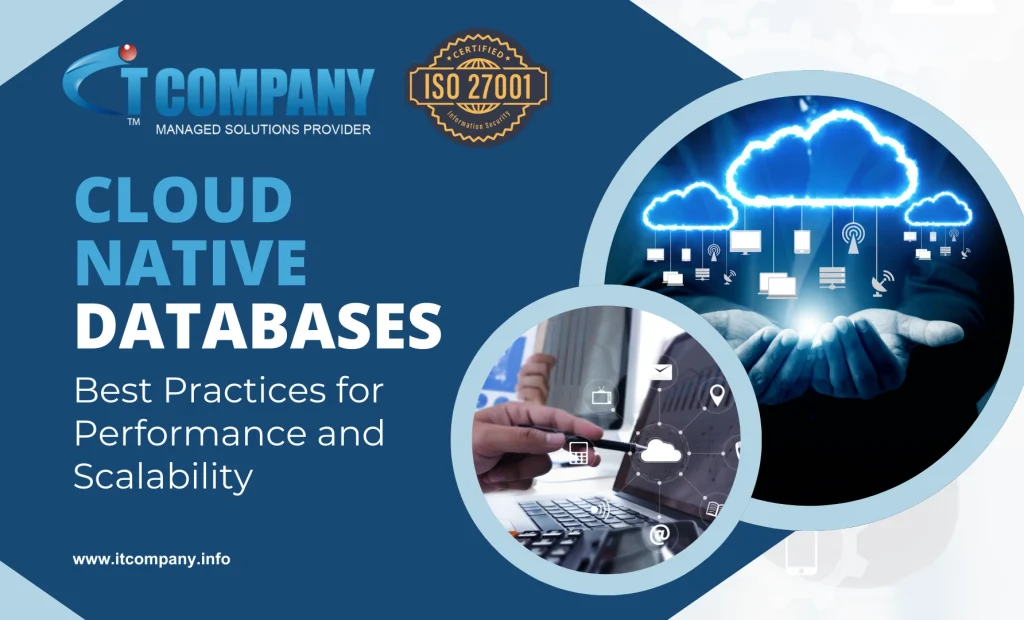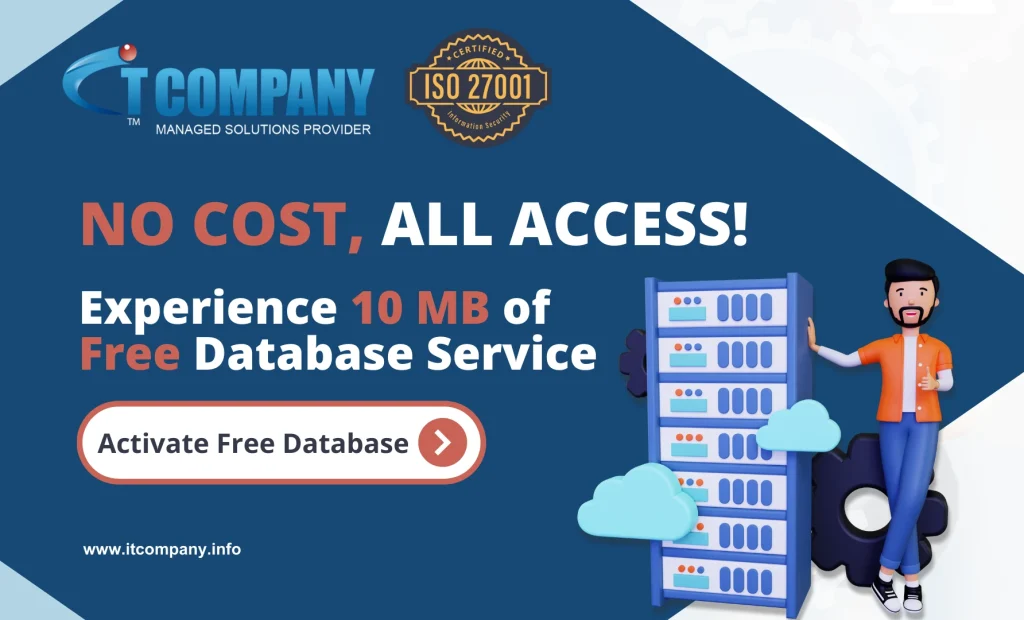
Cloud native databases are build to take full advantage of cloud infrastructure, offer flexibility, elasticity, and scalability to meet dynamic demands. However, its full optimal performance requires careful planning and implementation.
In this blog article we will explore 10 best practices and as a tip offer 10mb free database space in Toronto and Montreal and Calgary to explore new ideas.
Table of Contents
Toggle1. Choose the Right Database for Your Use Case
The first step in optimizing for performance and scalability is selecting the right database for your application. Cloud-native databases come in various types, each designed to handle specific workloads:
- Relational Databases Ideal for structured data with complex relationships, transactional integrity, and ACID compliance.
- NoSQL Databases (e.g., DynamoDB, MongoDB): Perfect for unstructured data or data models that require high scalability and low-latency access, such as document, key-value, or wide-column stores.
- NewSQL Databases (e.g., Google Spanner, CockroachDB): Combine the scalability of NoSQL with the consistency and transactional properties of relational databases.
By choosing the right database based on your workload, you ensure it is optimized for performance and can scale as your app grows.
2. Leverage Auto-Scaling
Based on demands cloud native database automatically scale resources. AWS, Google Cloud, and Azure offers best service providers. They automatically adjust computation and storage resources.
Auto-scaling is one of the available option. It can grow or shrink dynamically. Which allows you to handle spikes in traffic without manual intervention. Thus it saves costs and makes it sure to take advantage of proper resource allocation to application’s needs in real-time.
3. Design for Sharding and Partitioning
Sharding and partitioning are techniques for distributing data across multiple servers or regions in Toronto and Montreal and Calgary.
- Sharding ensures data split into smaller pieces – which is in more manageable chunks
- Partitions ensures that these chunks are stored and queried efficiently.
| Pro Tip When using cloud-native databases like DynamoDB or Amazon Aurora, it’s critical to design your data model around the concept of partition keys. Choose partition keys that distribute data evenly to avoid “hotspots” that could overload individual nodes. Effective sharding ensures that as your data grows, the database can scale seamlessly. |
4. Use Caching Effectively
One of the most effective ways to boost database performance is by using a caching layer.
Caching frequently access data and drastically reduce the load on database. That in return speeds up response times, and hence improve the overall user experience.
Cloud-native databases provide built-in caching, but you can also integrate an external caching solution. By serving read-heavy requests from the cache, you can significantly reduce the database’s read load. Which makes your system more responsive during peak traffic times.
| What is Caching? Caching is the process of storing frequently accessed data in a faster, temporary storage layer (called a “cache”) so that subsequent requests for the same data can be served more quickly, without having to repeatedly retrieve it from a slower or more resource-intensive data source (like a database or external service). |
5. Optimize Indexing and Query Performance
Indexes are vital for speeding up data retrieval. But if you have too many indexes or inefficient indexing strategies, it can hurt performance.
It is very important to carefully plan and optimize it to ensure proper alignment with your most common queries.
When using a relational database, focus on indexing frequently queried columns, but avoid over-indexing, as each index comes with a maintenance cost during write operations. For NoSQL databases, ensure that queries are designed to take advantage of secondary indexes and that queries are optimized for key access patterns.
Additionally, keep an eye on query performance and use query optimization tools (e.g., EXPLAIN in MySQL or Query Optimizer in PostgreSQL) to identify slow or inefficient queries.
6. Leverage Read Replicas
To optimize read-heavy workloads, cloud-native databases often provide read replicas. These replicas are copies of the primary database that can be used to distribute read traffic, reducing the load on the primary database. This is particularly useful in applications where reads vastly outnumber writes.
7. Implement Connection Pooling
Opening and closing database connections can be an expensive operation in terms of time and resources, especially in a cloud environment. Connection pooling reduces the overhead by maintaining a pool of open connections that can be reused by your application.
8. Monitor Performance Continuously
Performance monitoring is essential to understanding how well your database is performing under load and identifying potential bottlenecks. Utilize cloud-native monitoring tools such as Amazon CloudWatch, Google Cloud Operations Suite, or Azure Monitor to track key metrics like CPU utilization, query latency, disk I/O, and throughput.
Setting up alerts based on these metrics will allow you to proactively address issues before they impact performance. Regularly reviewing database logs and performance insights also helps ensure that scaling decisions are based on accurate, real-time data.
9. Optimize for Network Latency
Latency can be a major bottleneck for distributed cloud databases. To ensure that your database performs optimally, consider the following strategies:
- Use regional deployments: Deploy your database in regions closest to your application’s user base to minimize network latency.
- Optimize network throughput: Ensure that your application uses high-throughput, low-latency connections (e.g., through Virtual Private Cloud (VPC) peering or dedicated interconnects).
- Minimize cross-region traffic: If your app requires high availability across regions, replicate data across multiple regions (using tools like Aurora Global Databases or Cloud Spanner) to reduce latency and improve resilience.
10. Regularly Backup and Test Disaster Recovery
While it’s crucial to focus on scalability and performance, you also need to ensure your database remains resilient to failures. Cloud-native databases offer automated backup and disaster recovery solutions, but you should actively manage and test these systems.
Regularly back up your data to prevent data loss, and ensure you have a tested disaster recovery plan in place. This is critical to maintaining business continuity and protecting data integrity, especially in distributed systems where failures can occur unexpectedly.
Additional Considerations
- Data Lifecycle Management: As data grows, managing old or irrelevant data becomes essential. Use automated data archival, purging, and expiration policies to ensure that only relevant data remains in your live database, improving both performance and cost-efficiency.
- Cost Management: Cloud databases offer scalable resources, but those resources come with a price tag. Keep an eye on your usage with cloud cost management tools to avoid unexpected expenses as your database scales.
Conclusion

Cloud-native databases are built to scale, but scaling without the right strategies can lead to inefficiency and unnecessary costs. By implementing these best practices — from selecting the right database to optimizing for performance, caching, and efficient scaling — you can ensure your cloud-native database delivers the performance your application requires without compromising on scalability.
As your application grows, cloud-native databases provide the flexibility to adapt, but maintaining an optimized setup requires proactive monitoring, intelligent design choices, and effective resource management. Keep these best practices in mind to ensure your cloud database runs smoothly and efficiently as your user base expands.